Abstract
Schedule-induced polydipsia occurred during initial magazine training to Noyes pellets (45 mg), disappeared when lever-pressing was acquired on a continuous reinforcement schedule (CRF), and reappeared when the food contingency was changed to a 1-min variable interval schedule (VI 1 min). Polydipsia also developed under a VI 1 min food schedule when water was concurrently available on various fixed ratios (FR), rather than being freely available. The level of the polydipsia and its motivating properties allow it to be classified as a form of adjunctive behavior.
Full text
PDF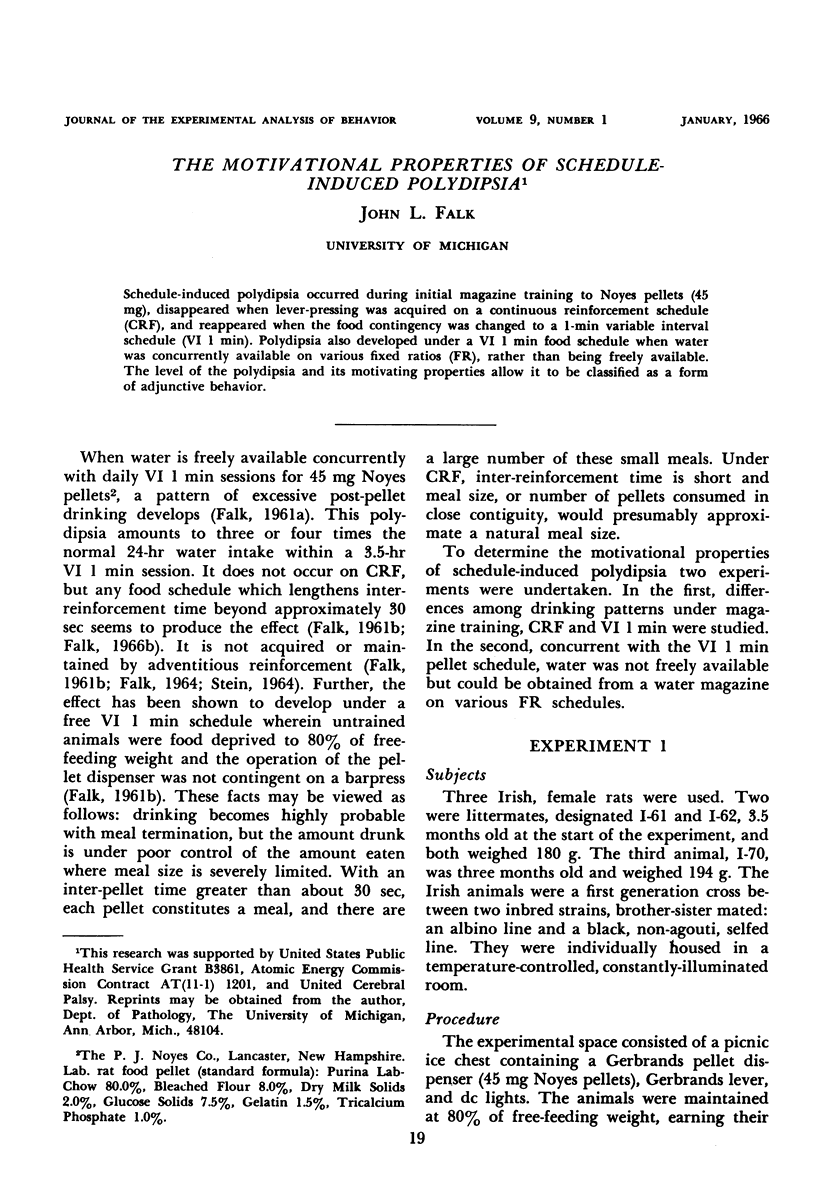
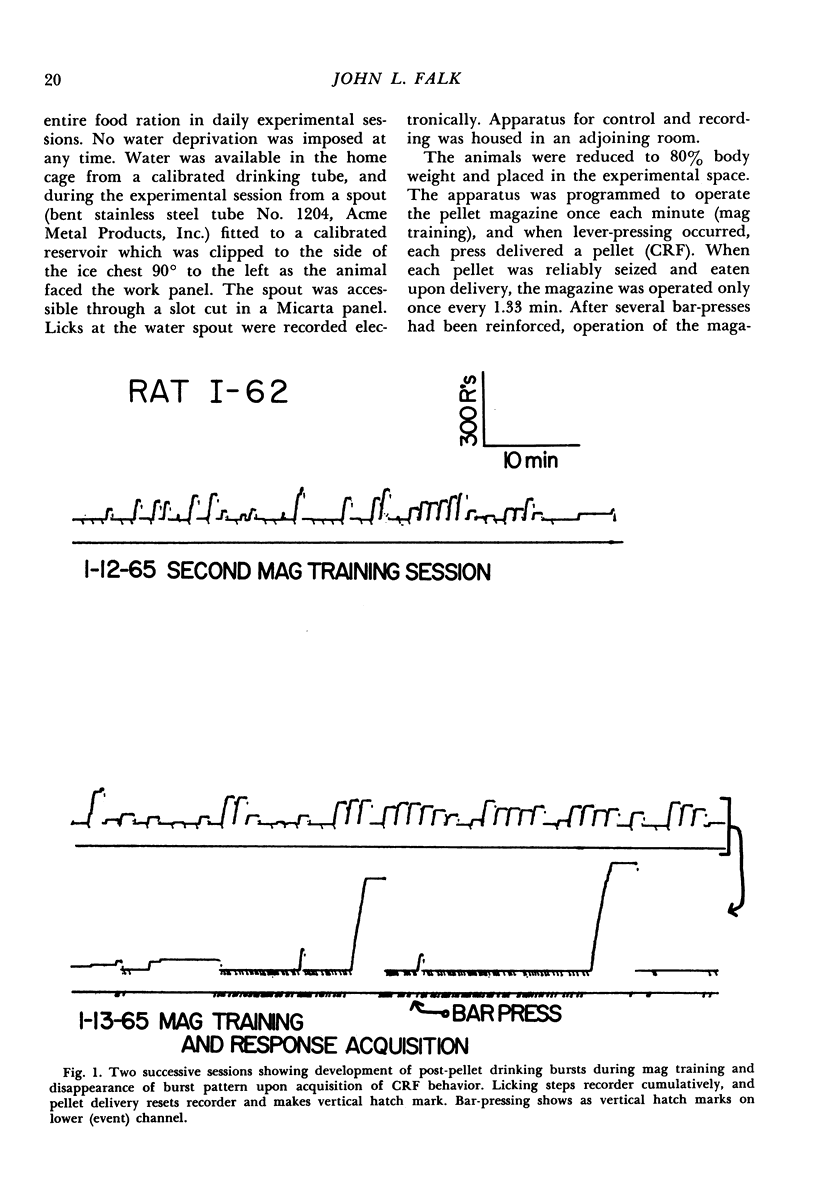
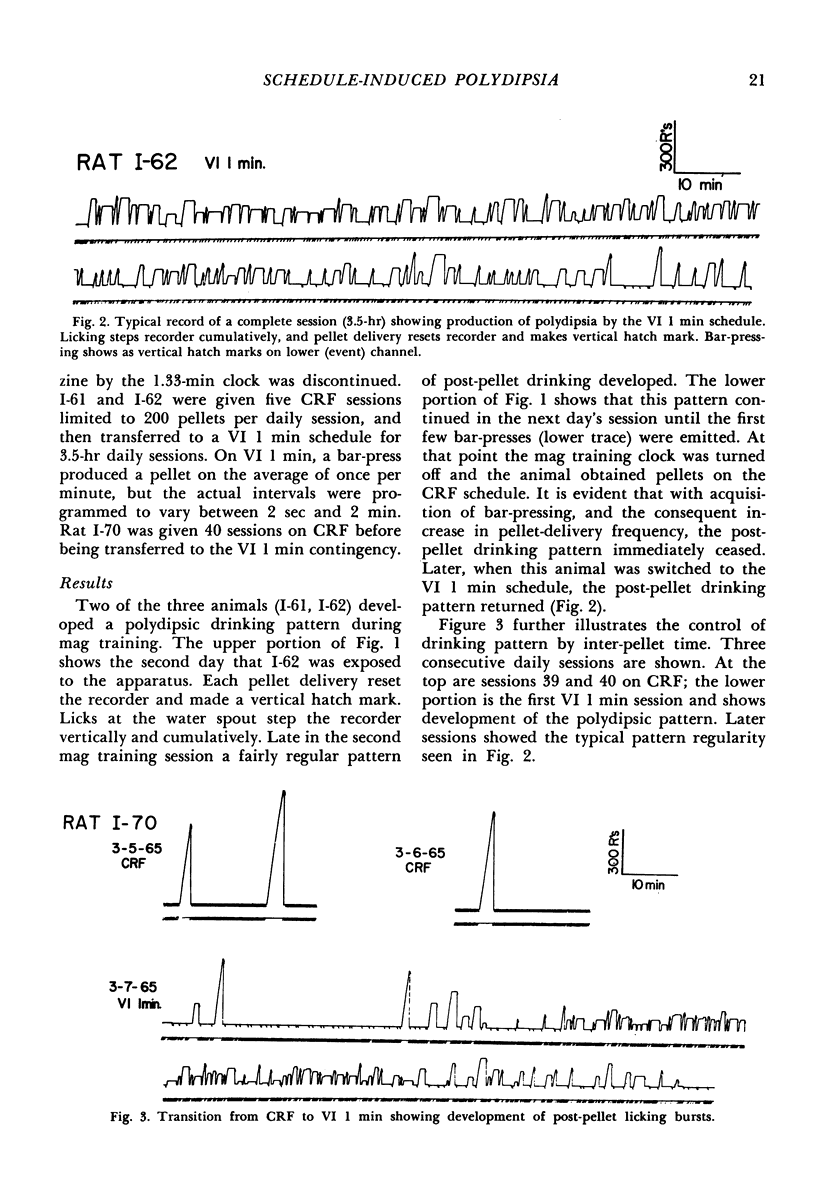
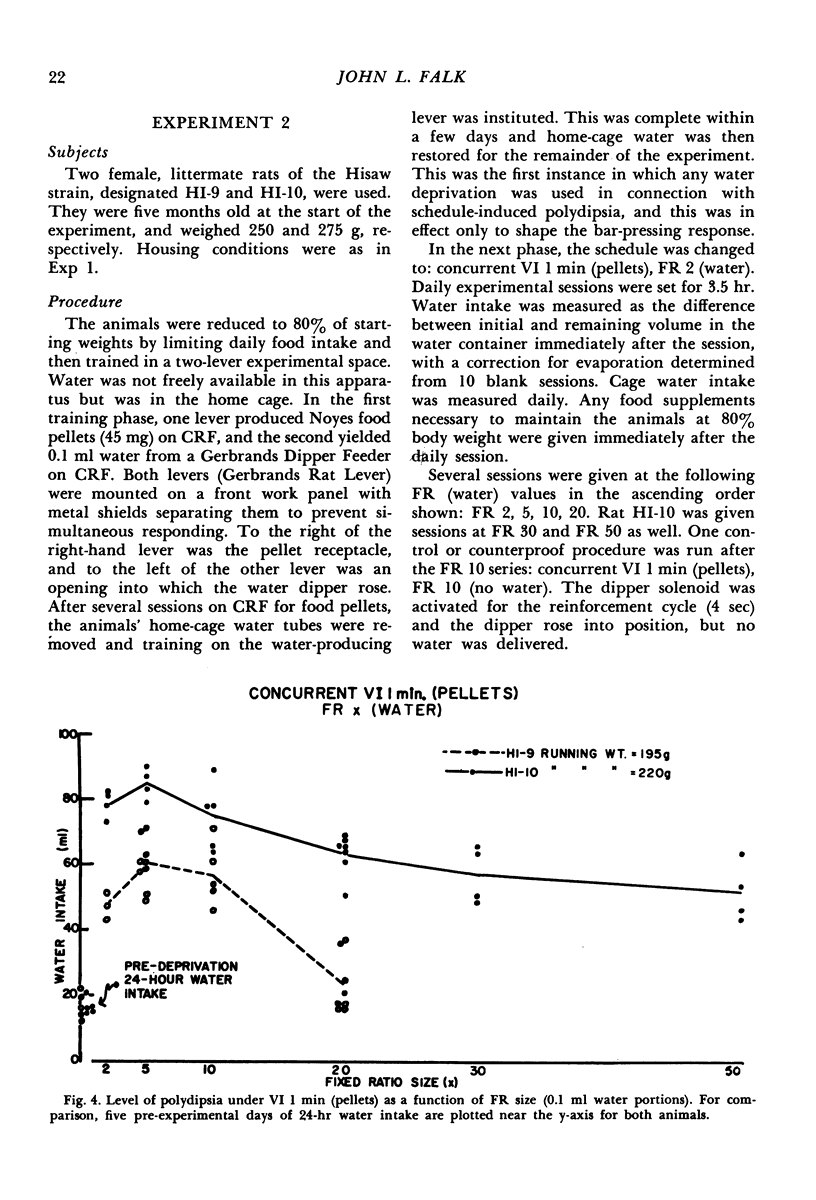
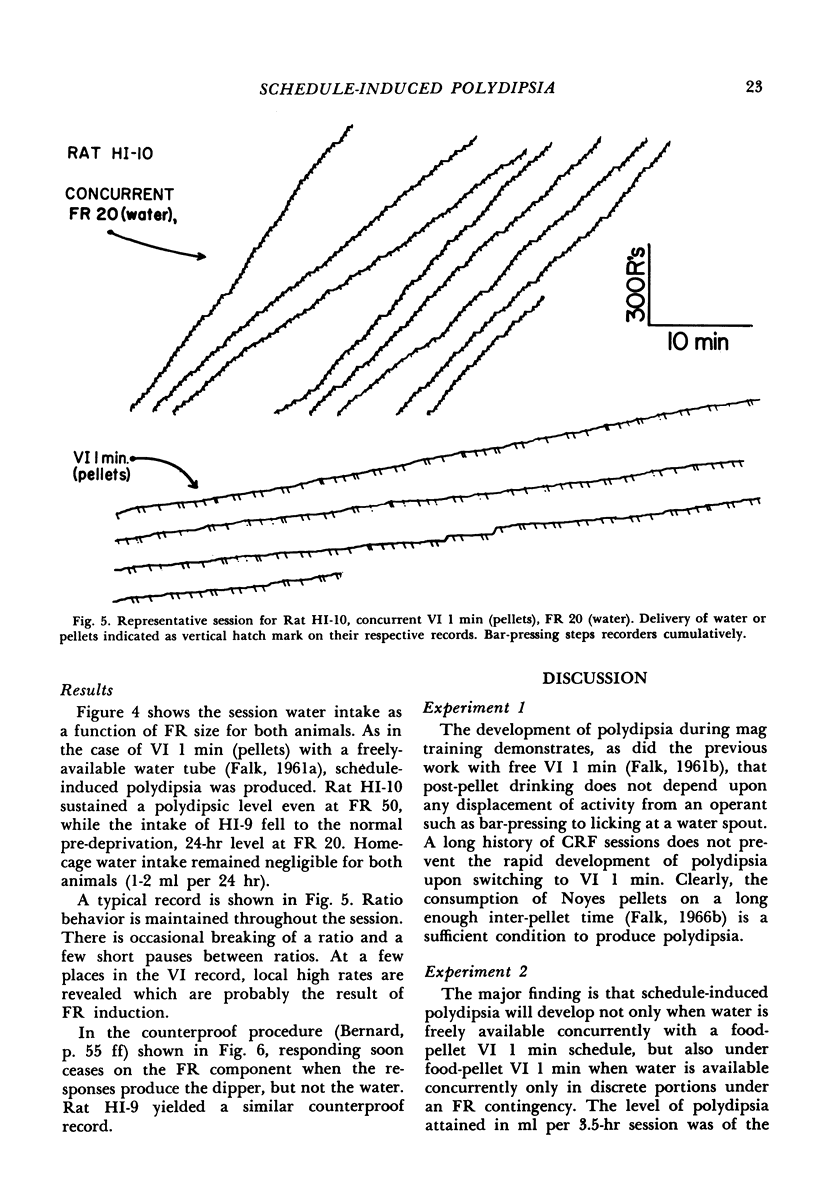

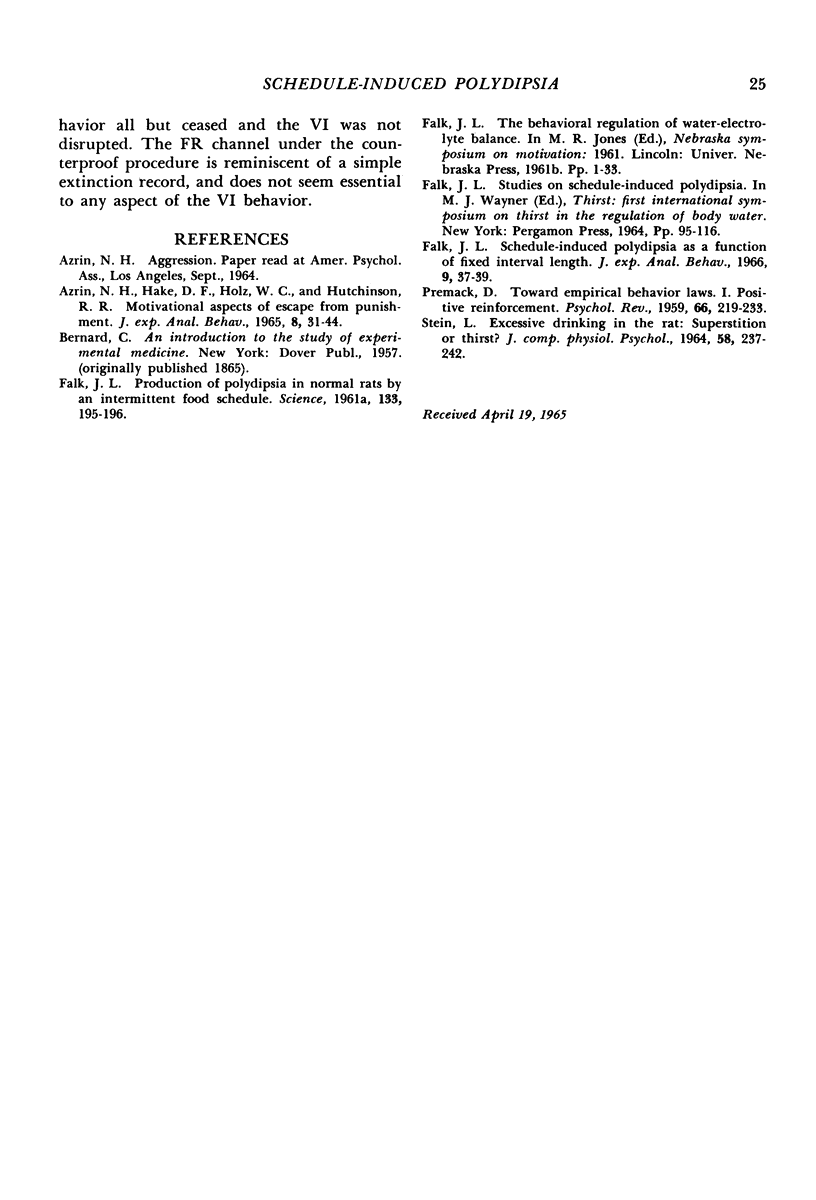
Selected References
These references are in PubMed. This may not be the complete list of references from this article.
- AZRIN N. H., HAKE D. F., HOLZ W. C., HUTCHINSON R. R. MOTIVATIONAL ASPECTS OF ESCAPE FROM PUNISHMENT. J Exp Anal Behav. 1965 Jan;8:31–44. doi: 10.1901/jeab.1965.8-31. [DOI] [PMC free article] [PubMed] [Google Scholar]
- FALK J. L. Production of polydipsia in normal rats by an intermittent food schedule. Science. 1961 Jan 20;133(3447):195–196. doi: 10.1126/science.133.3447.195. [DOI] [PubMed] [Google Scholar]
- Falk J. L. Schedule-induced polydipsia as a function of fixed interval length. J Exp Anal Behav. 1966 Jan;9(1):37–39. doi: 10.1901/jeab.1966.9-37. [DOI] [PMC free article] [PubMed] [Google Scholar]
- PREMACK D. Toward empirical behavior laws. I. positive reinforcement. Psychol Rev. 1959 Jul;66(4):219–233. doi: 10.1037/h0040891. [DOI] [PubMed] [Google Scholar]
- STEIN L. EXCESSIVE DRINKING IN THE RAT: SUPERSTITION OR THIRST? J Comp Physiol Psychol. 1964 Oct;58:237–242. [PubMed] [Google Scholar]


